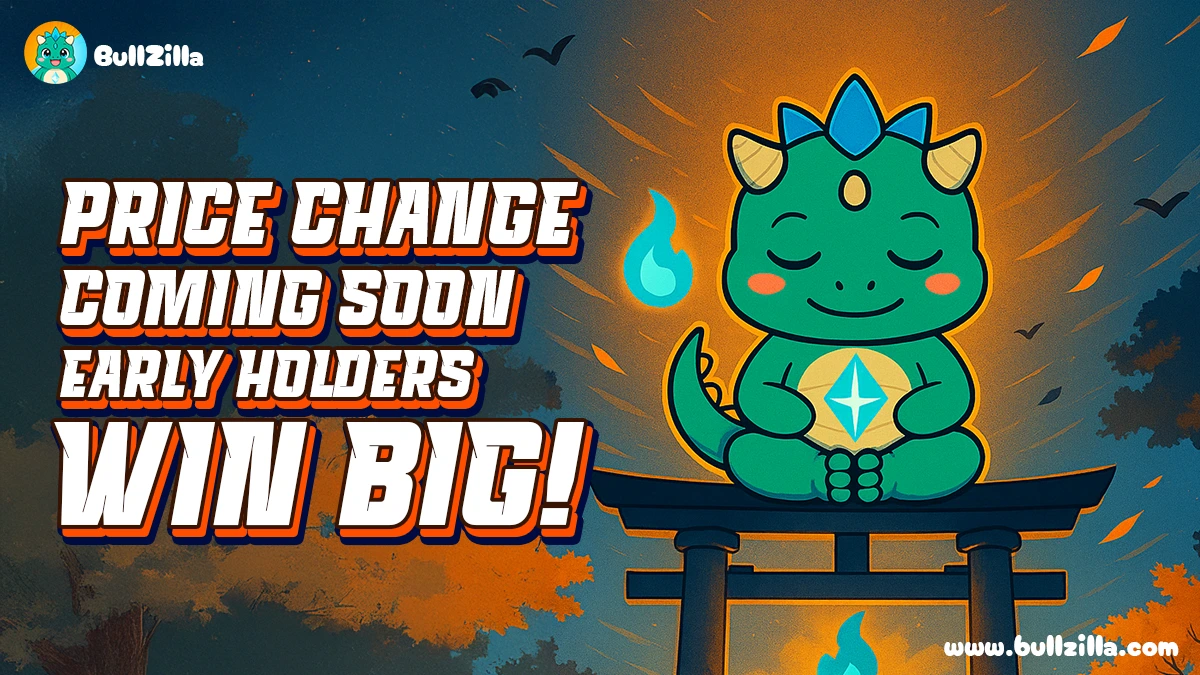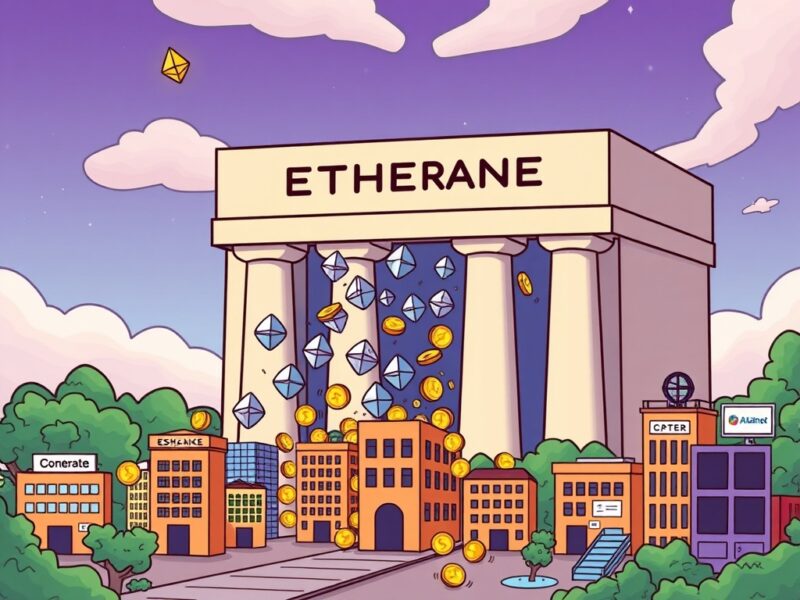Why BullZilla’s Roar Burn Strategy Makes It the Top New Meme Coin to Invest in Now as Bonk and Solana Power Ahead

The market for the top new meme coins to invest in now is rapidly changing. No longer defined by simple jokes or fleeting hype, today’s leading meme coins are blending narrative, utility, and advanced tokenomics. In 2025, three projects stand out: BullZilla, Bonk, and Solana.
BullZilla emerges with a meticulously structured presale and its signature Roar Burn strategy. Bonk expands into new horizons with the launch of a $1 stablecoin, adding stability to its meme-driven brand. Solana reinforces its dominance through the Alpenglow upgrade, improving governance and scalability.
Together, these projects reveal how meme coins have transformed into ecosystems with real growth potential. For students of finance, blockchain developers, and analysts, they represent living case studies of the top new meme coins to invest in now.
BullZilla: Roar Burn and Zilla DNA Define Its Growth Path
BullZilla ($BZIL) is in Stage 1-C of its presale. Already, more than 16.25 billion tokens have been sold, raising over $119,711. At a price of $0.00001908 per token, entry remains accessible, particularly given the project’s unique mechanics.

Zilla DNA: Strategic Tokenomics
BullZilla’s total supply of 160 billion tokens is distributed as follows:
- Presale Engine (50%): 80 billion tokens, allocated to drive community adoption. A progressive price engine raises the cost every $100,000 raised or every 48 hours, ensuring continuous momentum.
- HODL Furnace (20%): 32 billion tokens allocated to staking, with rewards reaching up to 70% APY, encouraging long-term commitment.
- Treasury & Ecosystem (20%): Another 32 billion tokens fund development, marketing, and community growth.
- Burn Pool Reserve (5%): 8 billion tokens fuel the Roar Burn Mechanism, reducing supply chapter by chapter.
- Team Allocation (5%): 8 billion tokens locked for two years to align incentives.
The Roar Burn Mechanism
The Roar Burn stands at the heart of BullZilla’s strategy. Each new chapter in the project triggers a live burn, permanently removing tokens from supply. This increases scarcity and strengthens value potential. Each burn is paired with a “Roar Surge”—a wave of community engagement and visibility that amplifies demand.
The combination of scarcity and excitement sets BullZilla apart. Unlike traditional meme coins, it doesn’t just rely on attention, it builds structural value into its ecosystem.
Investment Scenario: $4,000 at Presale
| Investment Amount | Presale Price per $BZIL | Tokens Secured | Hypothetical Price Target | Potential Value | ROI Multiple |
| $4,000 | $0.00001908 | 209,600,000 | $0.001 | $209,600 | ~52x |
Bonk: From Meme Energy to a Stablecoin Ecosystem
Bonk, initially born as a meme token, is entering new territory with the introduction of a $1 stablecoin. This move reshapes its identity from a speculative asset into a utility-driven ecosystem.
Stablecoins provide anchors in volatile markets. By pegging to the dollar, Bonk’s new token adds reliability for payments, lending, and trading. It also creates opportunities for DeFi integration, where predictable value is essential.
This shift highlights Bonk’s evolution. Instead of relying solely on cultural momentum, it is layering practical use cases onto its brand. For investors and analysts, this signals long-term growth potential beyond short-lived hype. It positions Bonk among the top new meme coins to invest in now, blending the strength of meme culture with the trust of stable-value assets.
Solana: Alpenglow Upgrade Strengthens Institutional Appeal
Solana has long been a leader in blockchain performance, with transaction speeds among the highest in the industry. Its latest Alpenglow upgrade builds on this reputation, focusing on governance, scalability, and validator efficiency.
The upgrade introduces improvements to the way decisions are made on the network, giving stakeholders more effective participation in governance. It also enhances throughput, ensuring that Solana can handle rising demand as institutional and developer adoption increases.
For institutions, stability and clarity in governance are crucial. By implementing Alpenglow, Solana sends a strong signal that it is prepared for enterprise-scale integration. This reinforces its place not only as a high-performance blockchain but also as a community-driven ecosystem ready to meet future demands.
Its combination of speed, governance, and resilience secures Solana’s position in the discussion of the top new meme coins to invest in now, even as it transcends meme coin origins to become a major layer-one chain.

Conclusion: The Evolving Face of Meme Coins
BullZilla, Bonk, and Solana represent three unique paths for crypto’s future. BullZilla thrives on scarcity and engineered tokenomics, Bonk bridges meme culture with stability, and Solana strengthens institutional trust through upgrades.
For traders and students of finance, they reflect the diversity of strategies now defining the top new meme coins to invest in now. Bull Zilla appeals to those seeking early entry into structured presales with deflationary mechanics. Bonk showcases adaptability by merging culture with stability. Solana provides the backbone of scalability and governance for long-term adoption.
The lesson is clear: the top new meme coins to invest in now are no longer about humor alone. They are ecosystems designed with growth, scarcity, and adoption in mind. BullZilla, Bonk, and Solana each show how narrative and function can converge to create serious opportunities.

For More Information:
BZIL Official Website
Join BZIL Telegram Channel
Follow BZIL on X (Formerly Twitter)
Frequently Asked Questions for BullZilla Presale
What is BullZilla’s Roar Burn?
It is a mechanism that permanently removes tokens from supply as the project advances through milestones.
How does BullZilla’s progressive presale work?
The price rises every $100,000 raised or every 48 hours, rewarding early participants.
Why is Bonk launching a stablecoin?
To provide stability, expand use cases, and integrate more deeply with DeFi applications.
What does Solana’s Alpenglow upgrade achieve?
It improves governance, scalability, and validator performance to support institutional adoption.
Are these coins safe to buy?
All crypto carries risks, including volatility and regulatory challenges. Independent research is essential.
Glossary
- Roar Burn: Token burning system reducing supply with each milestone.
- Presale Engine: Dynamic pricing structure that rewards early investors.
- Stablecoin: A cryptocurrency pegged to a stable asset, often USD.
- Staking: Locking tokens to earn rewards while supporting network security.
- Governance Vote: Community decision-making on blockchain upgrades.
- Validator: A node that confirms and secures blockchain transactions.
This publication is sponsored. Coindoo does not endorse or assume responsibility for the content, accuracy, quality, advertising, products, or any other materials on this page. Readers are encouraged to conduct their own research before engaging in any cryptocurrency-related actions. Coindoo will not be liable, directly or indirectly, for any damages or losses resulting from the use of or reliance on any content, goods, or services mentioned. Always do your own research.
The post Why BullZilla’s Roar Burn Strategy Makes It the Top New Meme Coin to Invest in Now as Bonk and Solana Power Ahead appeared first on Coindoo.
Vous aimerez peut-être aussi

Federal Reserve to host stablecoin and DeFi-focused conference amid regulatory progress

Bitcoin's daily computing power hits a record high of 1.279 ZH/s
